15 Hands-On Activities to Promote Pincer Grasp Development
Affiliate and Referral links are used below to promote products I love and recommend. I receive a commission on any purchases made through these links. Please see my disclosure policy for more details. As an Amazon Associate, I earn from qualifying purchases.
“How do I get my child to hold a pencil correctly?”
I often receive this question from readers, especially parents. A large component of handwriting is how a child is holding a pencil while they write.
Did you know the building blocks for pencil grasp start when a baby is just a few months old?
What can you do to help support this skill in your child or students? Using hands-on activities to promote pincer grasp is a great place to start.
Hands-On Activities to Promote Pincer Grasp
There are lots of fun ways you can promote good pincer grip with older children and students. Including these types of fine motor activities in a child's day helps promote strong finger and hand muscles needed for future handwriting and any future life skill.
As a quick refresher, a pincer grasp is using the index finger, or pointer finger and thumb to pinch small objects between the fingers. You can scroll down past these activity ideas to get more information on this.
Pincer Grip Activity Ideas for Babies
If you have a baby who is in the age range for developing pincer grasp (8-10 months), there are some great ways you can help to encourage this grasp.
1 || PLAYING WITH BLOCKS
Introducing blocks of various sizes and textures encourages your baby to grasp items with their hands and explore with their mouths. I prefer wooden blocks myself since they provide more sensory input than plastic. But having a variety of textures is great too!
2 || INTRODUCING FINGER FOODS
Make sure your baby is ready for finger foods before introducing them, but encouraging finger foods like circle-shaped cereal or puffs is a great way to encourage the skill of grasping smaller objects.
Plus it promotes self-feeding and giving your youngster control over what they put into their mouth and body. Also remember to cut foods into long spears, instead of small chunks so that they are not a choking hazard for your baby.
3 || TURNING PAGES OF A BOARD BOOK
Board books are a great start to encourage language skills as well as pinching the pages to turn them. As your baby masters board books, start introducing books with thinner pages to perfect this skill.
Pincer Grip Activity Ideas for Toddlers & Preschoolers
When your baby gets to be 2 years or older, you can really amp up the pincer grasp activities to include smaller objects that aren't edible.
Of course, you need to be close by and monitor your young toddler or preschooler to make sure they don't put small items into their mouth.
With my own kids, I have found age 2 to be a good age to introduce items such as larger pom-poms and beads.
4 || POM-POM TRANSFER
Pom-poms are so fun and colorful! You can use them in crafts or transfer between containers. Here is a picture of my 2-year-old using a silicone candy tray to transfer pom-poms into. We even added some very basic color recognition and patterns with this.
5 || TONGS
Adding tongs into an activity is a great way to encourage a good pincer grasp and tripod grasp for handwriting. I like using tongs for the pom-pom transfer activity I mentioned above. Check below for some of my tong recommendations.
6 || CLOTHESPINS
Pinching clothespins is a great way to strengthen the fingers needed for the pincer grasp. You can even find clothespins that have to require various amounts of “squeezing” to open them.
7 || PLAYDOUGH
Playing with play dough (or slime, oobleck, or clay) is a great way to promote pincer grasp. You can form lines, shapes, animals, and numbers, have them create their own designs, or use play dough mats.
8 || SEARCH AND FIND ACTIVITIES
I love putting items into sensory play mediums like play dough, slime, oobleck, or moon sand and asking the kids to search and find them. If you use a thicker medium like play dough or slime, the child needs to dig the items out and this is great strengthening for the fingers and pincers.
9 || STRINGING BEADS
Stringing beads is a harder skill since it requires both hands to be pinching at the same time (one holding the string and one holding the beads).
This makes it an excellent activity for bilateral coordination and crossing midline. Young toddlers can also practice this using larger beads and thicker strings such as a shoelace or yarn.
10 || BEADS OR MARBLE TRANSFER
This activity works great with using tongs or fingers. Just set up two containers, one with a smaller opening such as an old milk bottle or drink bottle. Have the child pick up one marble or bead at a time and drop it into the container. Marble runs would also be a great addition to this.
For children younger than 3, be sure to use larger beads or marbles to help prevent choking hazards.
11 || PEELING STICKERS
Who doesn't love stickers? Peeling stickers from a sticker book or doing a craft activity with them is great pincer grasp practice. We use sticker books for our quiet bag at church too. Lots of great things you can do with them.
12 || LACING CARDS
Lacing cards are similar to stringing beads in that they use bilateral coordination and crossing midline. It's also a great visual motor activity as well as pincer grasp practice.
BONUS || BUTTONS
Using buttons is another great way to practice pincer grasp. You can use a button board or just practice with buttons on clothing while the child gets dressed.
Pincer Grasp Activities for Older Children (ages 6+)
13 || NUTS AND BOLTS
I prefer using real items to pretend plastic ones, which is why I suggest nuts and bolts for older children (6+). However, there are plastic versions of these that you can introduce sooner if you like. It's a great way to incorporate some practical life work along with pincer grasp practice that is age-appropriate.
14 || CROCHETING
Crocheting is a higher-level skill that involves following a pattern, directions, bilateral coordination, crossing midline, and better finger manipulation. It's a great way to practice pincer grasp by using the needles and holding the yarn for older children.
15 || BOARD GAMES & PLAYING CARDS
There are so many great board games out there. Many of them require smaller pieces that need to be moved down the board while playing. Card games such as UNO are also great age-appropriate activities for practicing pincer grasp with older kids.
What is Pincer Grasp?
Developing a pincer grasp is an important milestone for your child.
A pincer grasp is a hand grasp that develops around the time a baby is 8-10 months old.
This grasp corresponds to the time a baby is beginning to feed themselves finger foods. The pincer grasp is needed in order to grasp a small item, pinch it between the index and thumb, and bring it to the mouth.
You will notice from the picture below that there are two types of pincer grasp, the inferior pincer grasp, and the regular pincer grasp.
The Inferior pincer grasp, or crude pincer grasp uses the pads of the index and thumb for grasping.
The pincer grasp uses the tips of the index and thumb fingers for grasping.
For the point of this post, we will be focusing on the pincer grasp. You can read more about the inferior pincer grasp in my post on pincer grasp development here.
For pencil grasp, the pincer grasp is needed for a static and dynamic tripod grasp while holding a pencil. You will notice the open “web space” that the pencil rests in when writing (shown below). This is how you want a pincer grasp to look (shown above).
Recommended Toys And Tools for Pincer Grasp
Here are some of the toys and tools I mentioned above in the activities to promote pincer grasp. These links will lead you to Amazon.
Learning Resources Jumbo Tweezers Set Of 12Learning Resources Helping Hands Fine Motor Tool Set, 4 Pieces3 CHUNKY Safety Plastic Tongs/Tweezers for Children – Fine Motor Tools, Occupational Therapy, Special Needs, Sensory Bin, Preschool ToolsSet of 5 Handy Scoopers Tongs and Tweezers for Children – Fine Motor Tools, Occupational Therapy, Special Needs, Sensory Bin, Preschool ToolsFarm SticksAdapt-Ease Grasp and Match Occupational Therapy, Fine Motor SkillAdapt-Ease Resistance Pinch Exerciser Finger Grip Strengthening ClothespinsAdapt-Ease Resistive Grasp and Pinch Exerciser Therapy SetAdapt-Ease Grasp & Match ABC Alligator Therapy Life Skill GameSilicone Chocolate Molds & Candy Molds – Ankway Set of 3 Non Stick BPA Free Flexible Hearts, Stars & Shells Mini Wax Molds (15 Cups)Melissa & Doug Reusable Sticker Pad: My Town – 200+ Stickers and 5 ScenesFirst 100 Words Sticker Book: Over 500 Stickers (Play and Learn)Melissa & Doug Reusable Sticker Pads Set: Play House and Habitats – 325 StickersMelissa & Doug Primary Lacing Beads with 30 Beads and 2 lacesJumbo Lacing & Stringing Wooden Beads Animals with String Packaged with Metal Box | Montessori Toddler Preschool Fine Motor Skills Toys for Occupational Therapy and Autism OTBest Jumbo Stringing Beads & Nuts and Bolts for Smart Boys and Girls by Kids Korner – Primary Lacing Bead Toy & Matching Fine Motor Skills Set with Toy Storage Montessori Occupational Therapy ToysLearning Resources Beads and Pattern Card SetMelissa & Doug Bead Bouquet Deluxe Wooden Bead Set With 220+ Beads for Jewelry-MakingMelissa & Doug Lace and Trace Activity Set: 5 Wooden Panels and 5 Matching Laces – PetsMelissa & Doug Alphabet Wooden Lacing Cards With Double-Sided Panels and Matching Laces
You May Also Like:

Heather Greutman, COTA
Heather Greutman is a Certified Occupational Therapy Assistant with experience in school-based OT services for preschool through high school. She uses her background to share child development tips, tools, and strategies for parents, educators, and therapists. She is the author of many ebooks including The Basics of Fine Motor Skills, and Basics of Pre-Writing Skills, and co-author of Sensory Processing Explained: A Handbook for Parents and Educators.
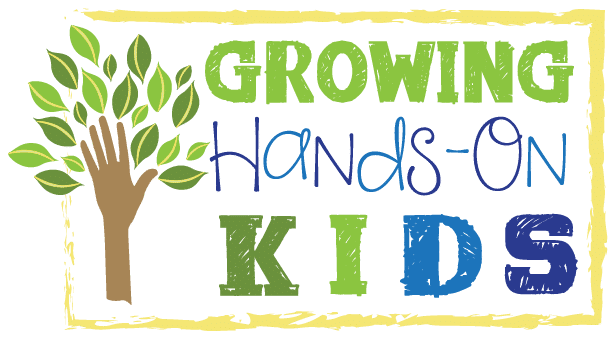
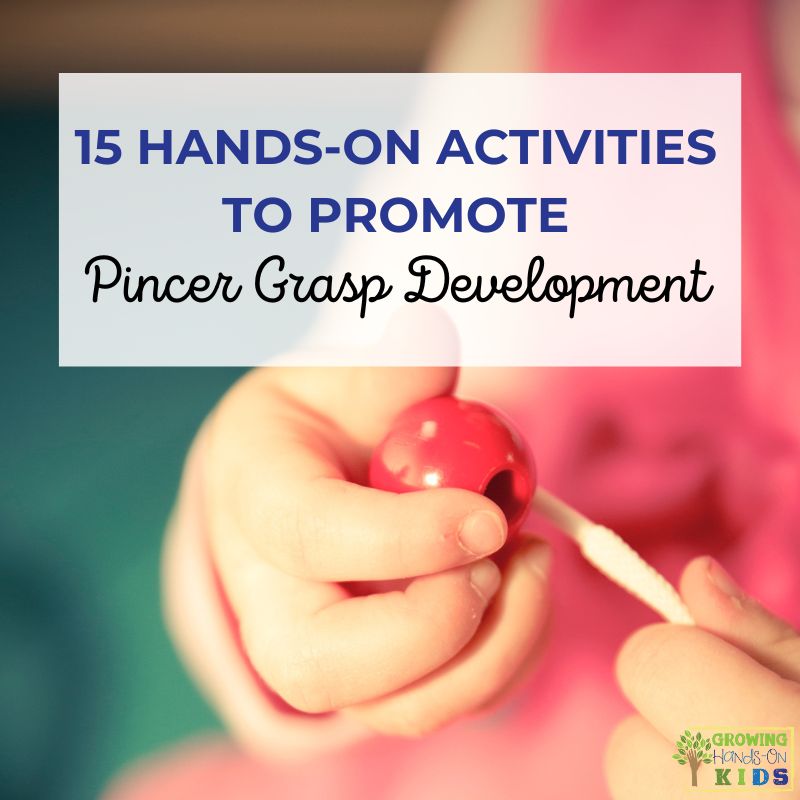
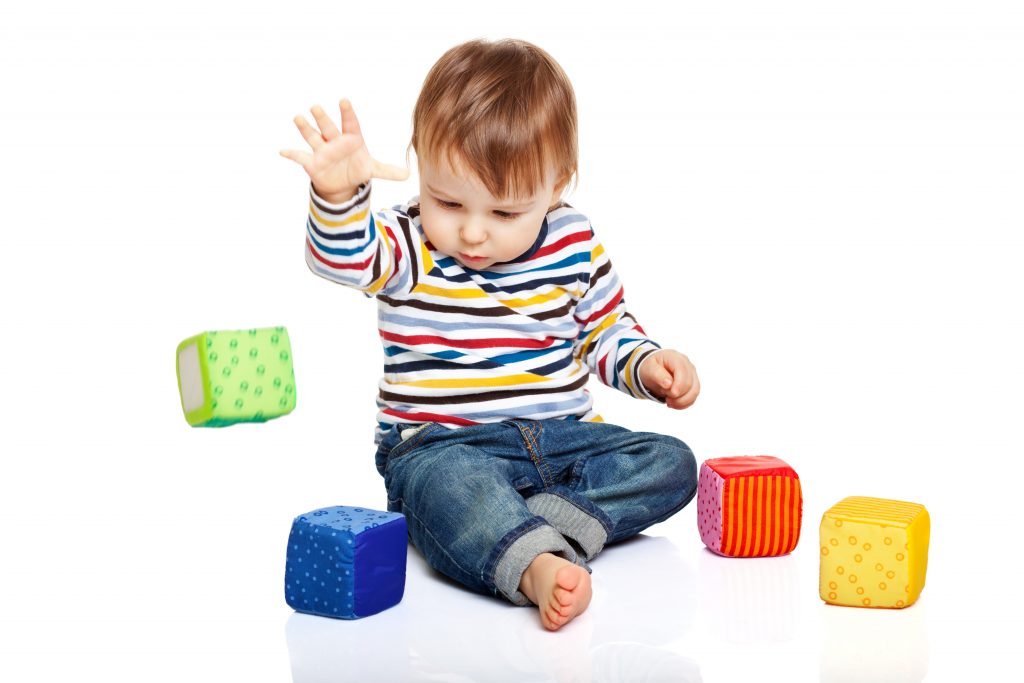
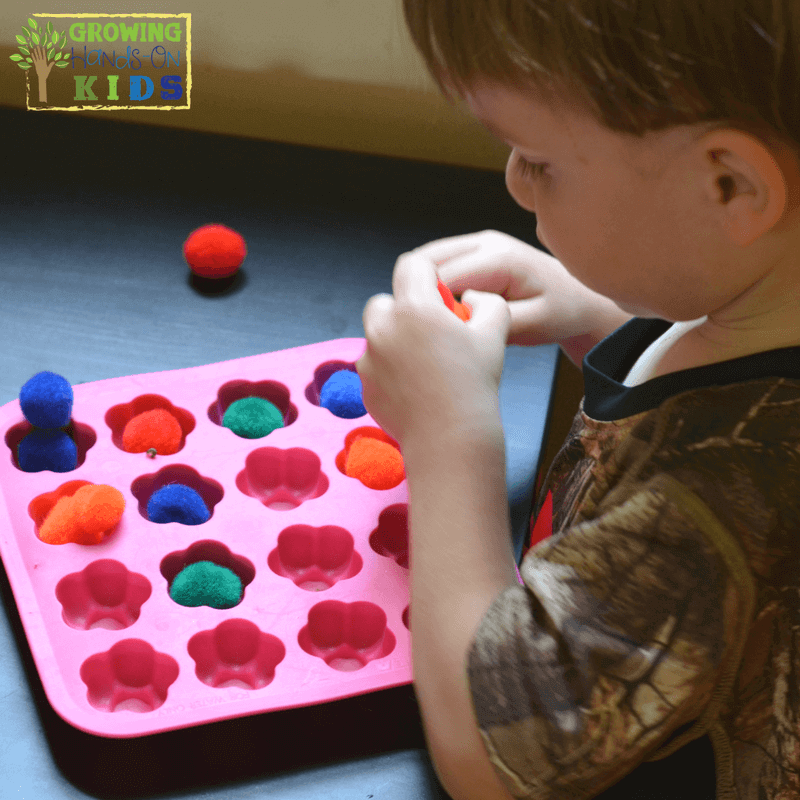
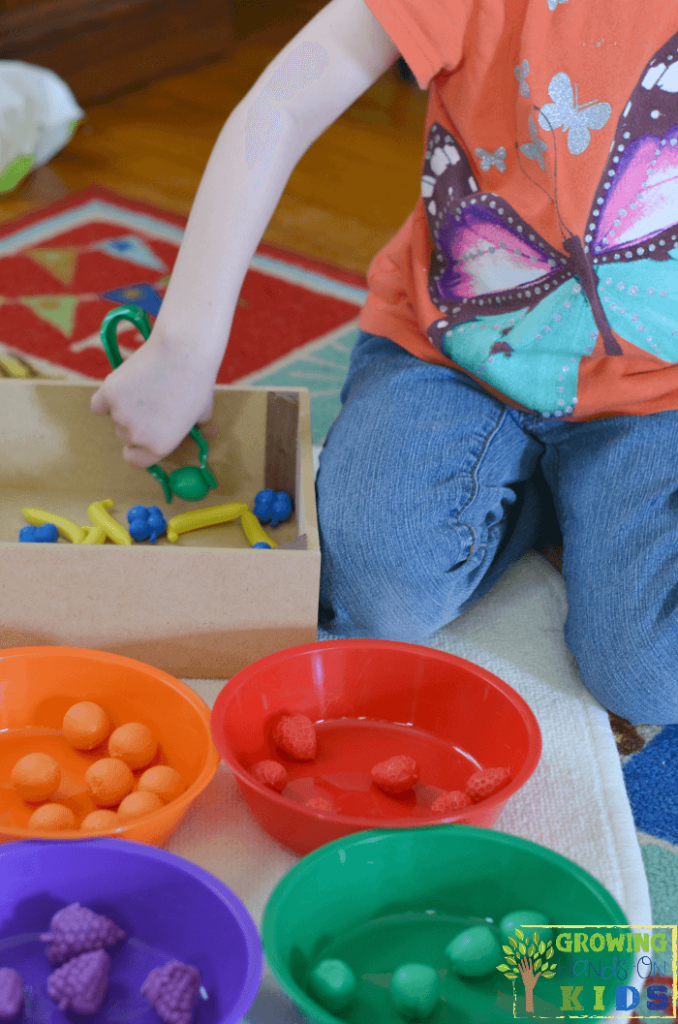
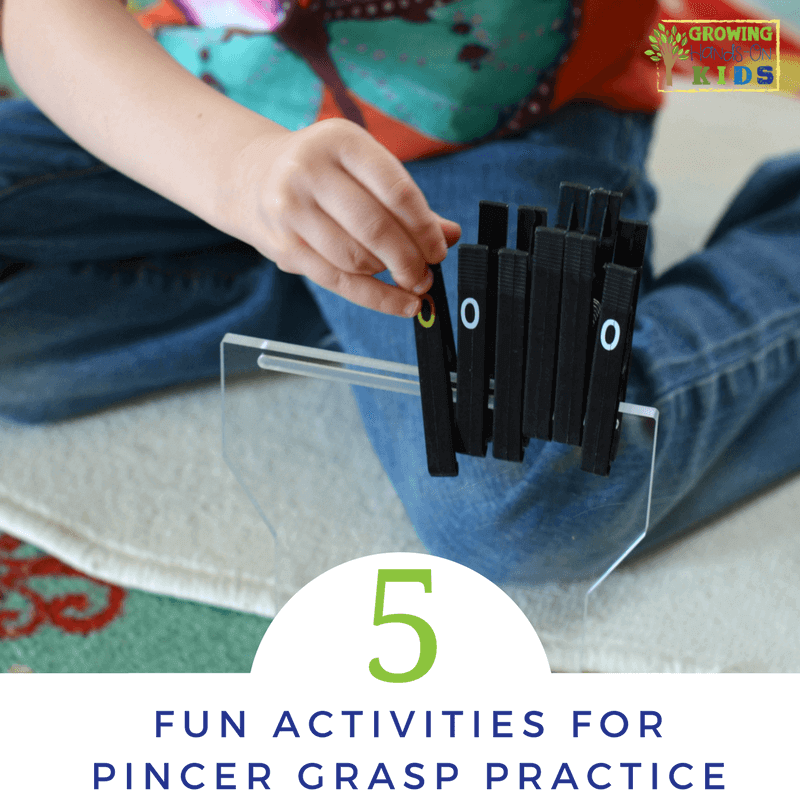
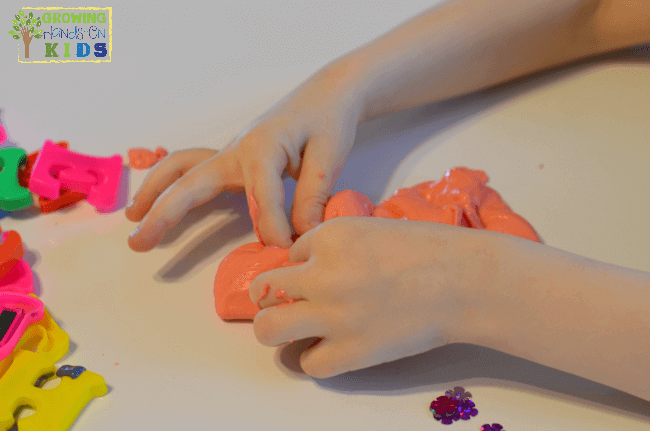
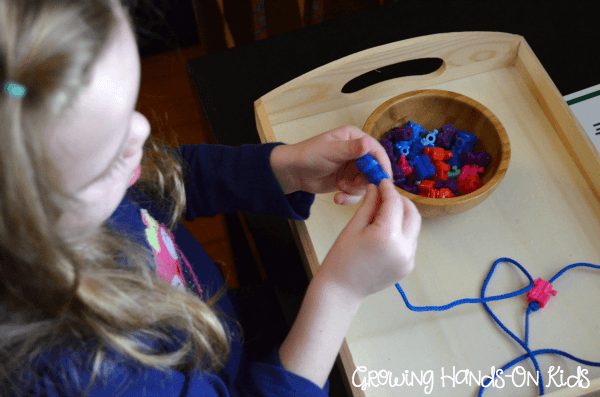
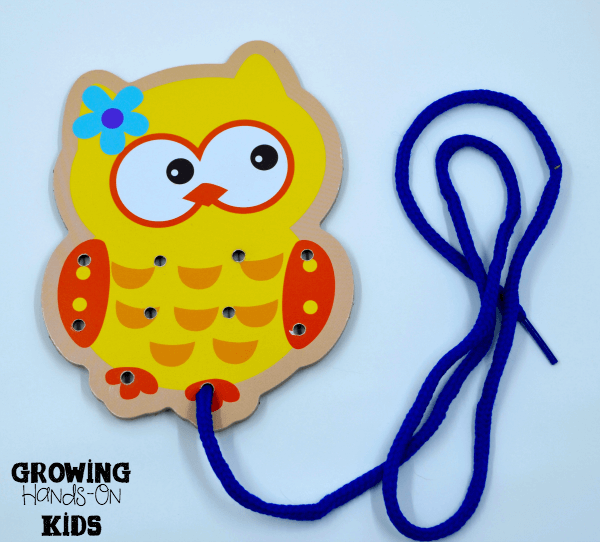
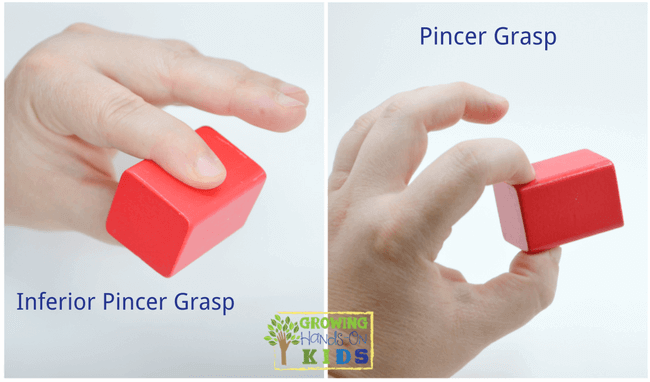
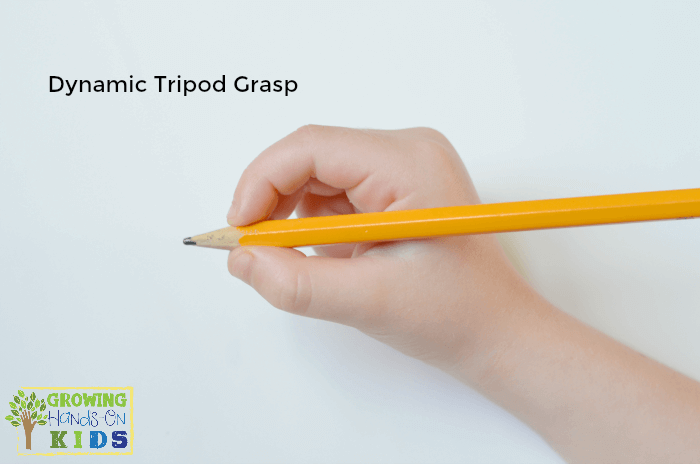


















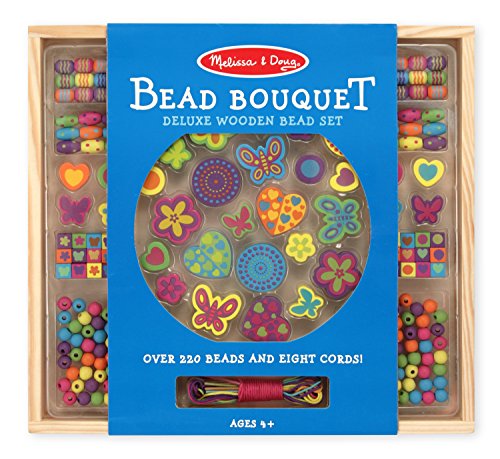


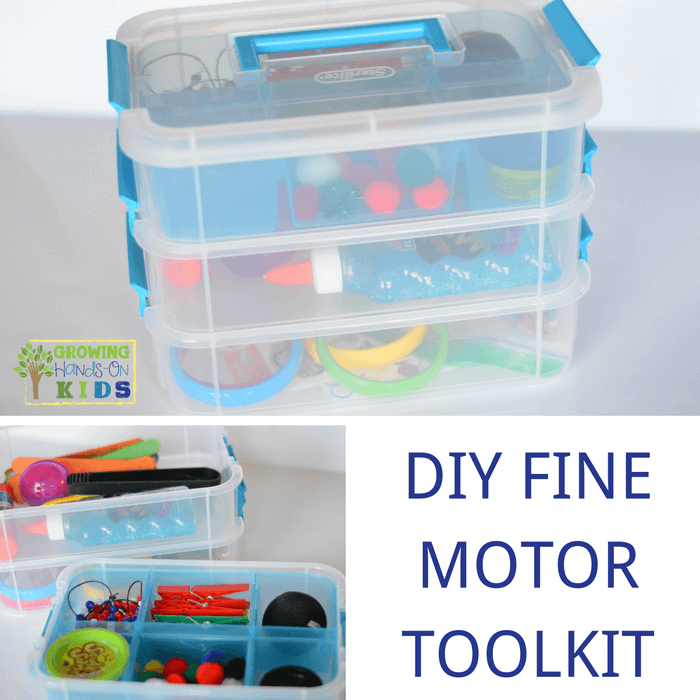
Great ideas! I find that people often get intimidated by the thought of working on fine motor skills and pincer grasp, but there are some very simple and practical activities that work on these skills. You’ve done a great job of highlighting how easy it can be to incorporate fine motor activities into the daily routine.
Best,
Diana